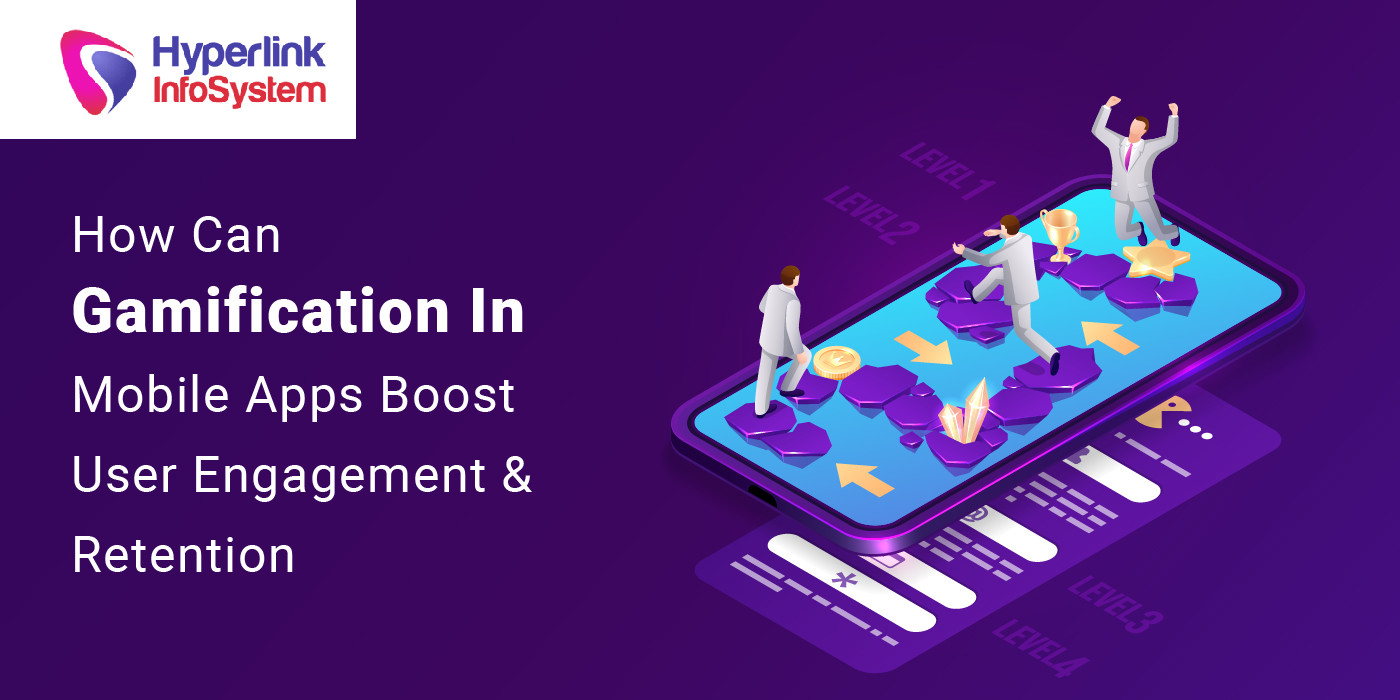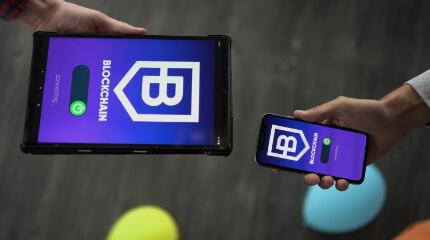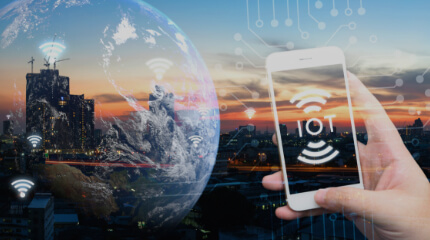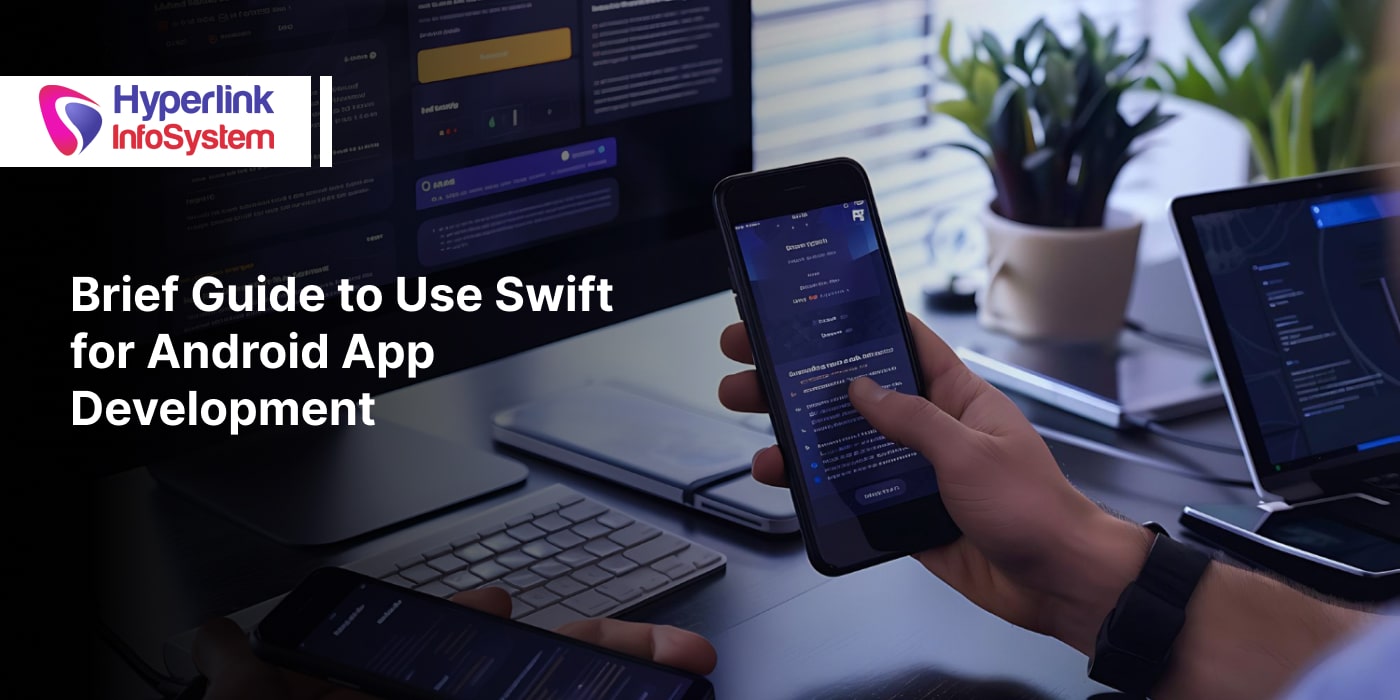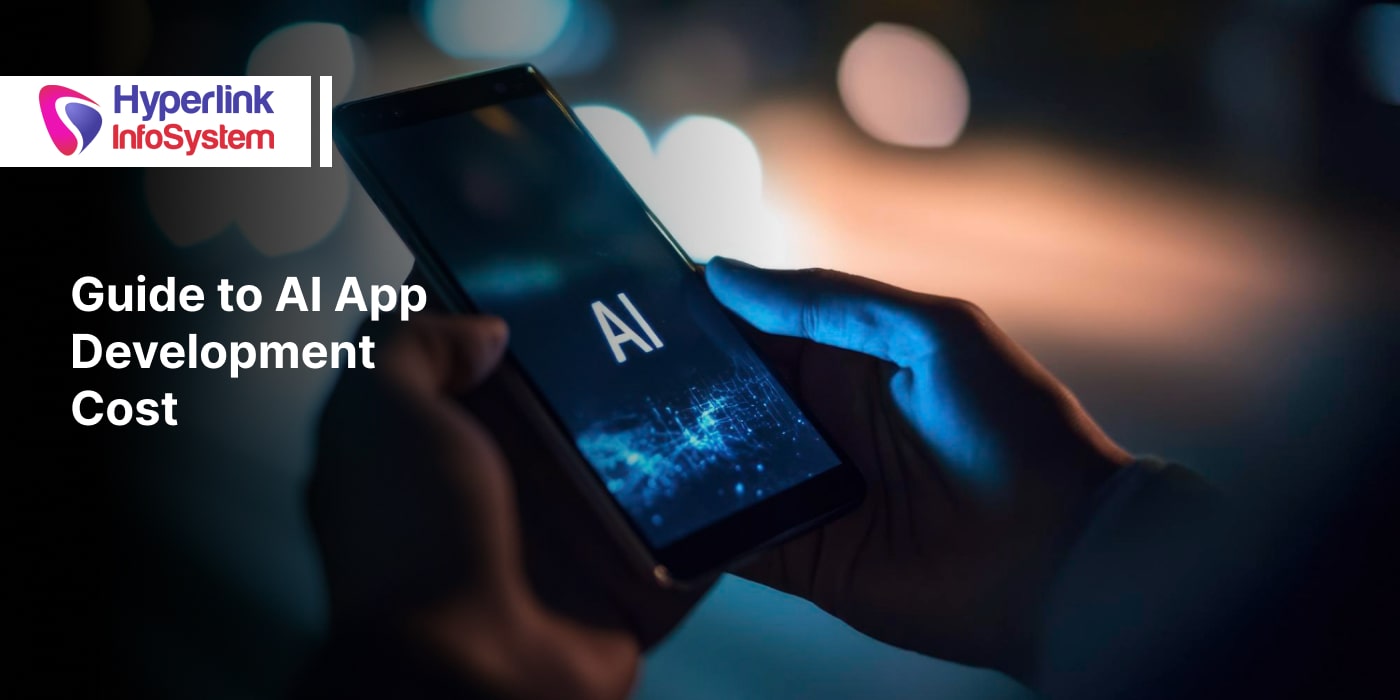�
Mobile apps have indeed changed our lives in ample ways. People download apps every now and then, but they barely use them, which is the main problem. It might be easy to compel people into downloading your app; however, it is tough to keep them using it. User engagement and retention play a significant role in this. According to the reports, mobile app retention is one of the considerable challenges of mobile apps, as over 60% of the app users stop using the app after 3-4 months of downloading.
Top app developers find it tough to keep the users hooked to their apps due to more and more apps conquering the market. These days, millennials & gen z get bored easily and need something exciting and challenging to keep them hooked. Several factors result in the success of mobile apps. The key factors that make the app famous are user experience, speed, availability, gamification, etc. This blog will discuss how gamification is one of the most effective strategies to engage and retain users.
You can find instances of gamification in your professional life as well, not just mobile apps. For example, tutors can reward their students with badges; an employer can reward their employees with an employee of the month medals; some sellers can offer their customers a specific number of stickers depending on their spendings for them to exchange it for a promoted product. Such strategies motivate students to study well and buyers to go to the same store. This is how gamification works in the real world. And today, mobile apps are also wanting to do the same with their audience.
As per the Statista reports, there are more than 1,651.66 million active
mobile gamers globally as of 2020, and this figure is expected to reach 2220.8 million by 2025. Another report shows 21.86% of mobile apps belong to the gaming category. Therefore, it doesn't come as a surprise that several apps from other types are borrowing game design elements such as rewards, points, badges, scoreboards, levels, internal currency, etc., for their marketing strategies. To put it simply, gamification apps use gaming features to engage users.
Topics To Cover
- Introduction To Gamification
- Importance Of Gamification For Your Mobile App
- Gamification Can Help You With App User Retention
- How To Implement Gamification In Your Mobile App
- A Few Examples Of Mobile Apps Using Gamified Elements For User Engagement
- Final Words
Introduction To Gamification
Gamification is a marketing tool to drive superior value for the mobile app. It is a concept of bringing game design to something that isn't normally considered a game, whether it's a web app, native app, or website. It's not about playing games or collecting points, but the game science aspect can be used for the mobile app advantage seeking to boost the engagement levels.
Gamification tends to bring excitement even in the usual activities. It uses some common gaming mechanisms like checkpoints, choices, characters, rewards, point levels, etc. Gamification can create a significant shift from more widely accepted motivational factors that people usually respond to at work. Looking from a practical angle, gamification can be implemented in almost anything where people are involved and can drive desired behaviors within the frame of that specific task.
Gamification elements aim to make the conventional platform more fun and engaging by adding a gaming edge to it. Determining what your users get for which tasks and considering the several different combinations & results will figure your design's success.
Importance Of Gamification For Your Mobile App
Before deciding to gamify your app, you should learn the advantages mobile app gamification brings to your business and how it can create user engagement. We will consider some scientific facts for this purpose.
An article by Matthias Koepp in 1998, now a neurology professor, states that as the adult players were progressing in the game and experienced more difficulties, their brains were releasing more dopamine. Thus, we can conclude that gamification elements in non-game apps also release dopamine in the human brain. Henceforth, they love to engage with the gamified app longer to receive more achievements and enjoy an accomplishment feeling. In other words, gamification can activate multiple human emotions.
Moreover, here's how gaming elements in your mobile app can motivate the users:
- It promotes competition. Scoreboards of other user's achievements stimulate the players to achieve more & compare their results with them.
- It evokes curiosity. Curiosity encourages users to move forward and get more rewards.
- It adds a sense of control. Nobody likes compulsion. That's why gamification aims to give users control and allow them to decide which milestone they wish to accomplish next.
Gamification Can Help You With App User Retention
Mobile apps with gaming elements can influence and motivate app users. An engaged customer will remain loyal and shop more goods & services. Businesses can encourage buyers to engage competitive instincts by bringing gaming elements into their apps. To create an established and lucrative app, attracting the right user is the start. Engaging and retaining the user is the key to make an app successful; just installing it is not enough!
Attracts New Users
You can attract first-time users to install your app and use it by offering rewards. You can give rewards for referrals, increase the rewards for extra rewards. Another way to entice new users is to create contests requiring users to provide their name and email address to use the app.
Gaming Elements To Educate Users
To
promote user engagement, get users to open an account by offering a reward. Instead of depending on loyalty points to retain users, using gaming elements can make it more fun and exciting. You can also reward them by offering them points for using the app frequently. Ensure that the gamification process is straightforward and helps users see a chance of receiving something.
People use apps that deliver value and render solutions to some problems. People tend to use apps that please them and excel their expectations. Understand your users' needs and how your app can meet their needs.
Competition
Gamification creates a sense of competition amongst the app's users. It is suggested to include a gamification layer with a mobile app. Your idea should be to give an experience that app users will never forget. Mobile apps have become a significant part of our lives, and therefore, they have to be created to hook the user and engage them.
Valuable
Design an app that is valuable for your users. You should be able to respond to the questions like - Why should your app be chosen over your competitors? Why should users use your app? Will your app bring value to your users? Etc. If you have clear answers to these questions, meaning your app is going in the right direction. Users don't use the app just cuz it sounds cool. They like to engage with apps that create value and make their life easier.
Integrating gamification elements like leaderboards, certifications, rewards, unlocking items, etc., can boost app engagement and retention. Apart from this, gaming elements also motivate social sharing via social media platforms, increasing your app's visibility.
How To Implement Gamification In Your Mobile App
To apply gaming elements in your app, you must start with design elements and then go further with the gamification workflow. The gaming elements are usually as below:
- Levels: Everyone is aware of this fundamental gaming element. Every game has levels that motivate players to keep playing to reach the next level. With each level, the game becomes more challenging, encouraging the users to play further.
- Points: These are basic rewards that the user receives for their achievements as they proceed within the game.
- Badges: Badges are a visual depiction of users' accomplishments, which show their performance in the app. For instance, some fitness trackers set forth badges based on the number of steps the user walks using the fitness app.
- Internal Currency: This is for game-related advantages such as getting extra lives or a fantastic theme. The gamer can receive this currency as a reward for specific achievements or as a daily bonus, Ludo King, for instance. It gives users currency bonuses after every few hours.
- Performance Graph: These charts display how the user has performed then earlier and track their records.
- Leaderboards: This includes a list of gamers' rankings showing who performs the best in a specific activity. Unlike performance graphs that display the performance of one user in a particular time frame, a leaderboard displays the performance with respect to others' performance.
You can apply these elements with special gamification software. A few of them are Apple's Game Center, Google Game Services, or Amazon GameCircle. But a successful mobile app gamification technique is not just about app development & design; it primarily aims to engage and retain users, and this is how it can be accomplished:
Remember the issue that needs to be resolved. For instance, your app isn't gaining the desired conversion level. We suggest you not just implement the gamified elements but also align them with your business goals.
Integrate social elements. The most noteworthy gamification feature is its ability to drive a mass of people jointly in the form of collaboration & socialization. Your gamified app should be created in a way that motivates & rewards socialization.
Simplicity is the Key. Gamification is all about simplicity and fun for the user to understand at which stage they are & what's their next task. Your job here is to guide the app user through each step smoothly & transparently.
Create a user-friendly reward system. Instead of promising 'A Big Reward' at the game's end, cut it down into fractions and give small rewards upon the accomplishment of each fraction.
A Few Examples Of Mobile Apps Using Gamified Elements For User Engagement
Gamified apps are now available in many industries. A few instances include e-learning, healthcare, eCommerce, gaming, finance, productivity, fitness, etc. Let's look at some examples of mobile apps that have effectively incorporated gamified elements for user growth and engagement.
Healthcare
The healthcare app sector is vast and might include fitness & wellbeing, medication, mental health, rehabilitation apps, etc. We have chosen some incredible apps that have gamified their apps.
Fitbit
Fitbit is a wearable fitness tracker connected to an app with these gamification elements:
- Social Engagement: You can discover your pals using Fitbit & compete with them in multiple sport-related challenges.
- Badges: When the app user finishes a certain activity, they receive a badge in the form of measurable achievement. For instance, the user walks a certain number of steps using the app.
- Challenges: Using Fitbit, you can virtually walk across the city of your choice in a way that you can "explore" a new city and remain fit.
MySugr
This healthcare gamified app was designed especially for people with diabetes. There is even a child version called 'My Sugr Junior.' The app describes the disease as a monster that should be kept under control. Diabetes patients must continuously keep track of their eating habits & sugar levels, which can be pretty boring. My Sugr can turn this boring routine into an interesting experience with all essential mobile app gaming elements like progress tracking & rewards.
Mango Health
This app reminds patients to take medicines and records each dose they took. What differentiates this app is that it offers users real-life rewards -store discount coupons. Other gaming elements are the internal currency that app users can gain for taking medication on time and social features. For instance, comparing medication compliance against those with similar conditions.
E-Learning
Gaining knowledge is no more associated with a dull routine. With the rise of the internet, mobile apps, & gamification, learning activities have evolved into e-learning. The use of technology to enable learning is indeed an exciting experience. Below are a few famous gamified apps from the education sector:
Duolingo
Duolingo helps you learn a language for free. It has gaming elements that enable users to track their performance and practice their linguistic skills. This e-learning app uses the following gaming element:
- Internal currency through which the user can earn for accomplishing various activities.
- Social interaction allows the users to collaborate with friends via Facebook.
- Badges are awarded for accomplishments such as completing a specific number of skills, following a specific number of friends, spending a specific amount of currency, etc.
- Point-based reward system & a scoreboard.
Khan Academy
This is an educational platform where students can learn math, arts, coding, and other subjects for free. Most lessons have an engaging form of communication with the users making their experience existing and stimulating at the same time. These are the ways how it gamifies the learning process:
- Skill Tree: The subjects you learn on this app are structured as a visual constellation for users to see their learning path clearly.
- Badges: The app renders a vast collection of badges that are themed as planets & celestial figures. Based on the subject's complexity, the badges are segmented into these categories: Black Hole, Sun, Meteorite, Moon, Earth, & Challenge Patches. Badges under these categories have funny and geeky names, such as Geek of the Week or - Mad Scientist
- Progress Dashboard & Points: The app displays your progress as a colossal themed achievement system & rewards energy points for the level completion and receiving badges.
Codecademy Go
This is an online e-learning platform that teaches coding & software development. The company launched a mobile app called Codecademy Go in 2018, and it uses the below gaming elements into the app:
- Progress dashboard displaying the completed lessons and the upcoming ones.
- Points are given per exercise accomplished.
- Badges are awarded for mastering particular stages of specific skills. At present, there are 4 types of badges – for the completion of courses, exercise, particular courses, & promotion badges.
Productivity
These app categories help us gamify our daily routine and live our lives more productively. Such apps use gaming elements to remind us of the imperative tasks we tend to delay. These reminders are built in a not annoying way, rather an invitation to finish a challenge. Below are some instances of gaming elements in productivity apps.
Forest
Have you thought of saving our planet? This is an interesting app aimed to make our lives better. This app uses tree planting as the gamification concept. It helps you focus on your tasks without distractions. If you wish to plant a tree, set a goal in your account, and keep track. Later, you will see results, and other app users can spend coins on your project. The more determined you are, the more trees you will plant, and ultimately they can turn into a forest.
Todoist
This one helps users to finish all sorts of task, from small to big work projects using the gaming elements in the following way:
- Points: For every task completed, the app gives the user karma points. Moreover, there are also negative karma "points" for missed deadlines.
- Levels: A specific amount of karma points unlocks another level.
- Social Engagement: The app users can share their scores with buddies on social media.
Habitica
This app aims to help users embrace new habits in the form of exciting and fun quests. Habitica uses the RPG game mechanisms; for instance, users can create characters, unite into guilds, and conquer monsters. The app follows the below gaming elements:
- Internal Currency: For every task accomplished, the app users get different rewards: Gold, XP, and HP.
- Learning: Once the users accomplish tasks, they can learn new activities.
- Competition: The users can compete with one another in challenges.
Final Words
Gamification plays a significant role in app user retention, as we discussed in this blog. Gamification can change the face of your app with its interactive gaming elements to keep your users hooked. The main way to engage users is by using games that reward them for playing and shopping through your app. Building an app that changes people's lives can give a lucrative and valuable experience. Provide rewards to the app users as they complete milestones within your app to increase conversion rates.
Mobile app developers should remember that every gamification technique does not work effectively. If not executed well, it can hamper your brand's image. Adding well-designed gaming mechanisms to your products can boost the user experience.
Therefore, it is necessary to pick the proper reward structure for your app to save yourself from gamification disasters. Use a solid gamification technique to boost user retention and don't look for short-term benefits.
